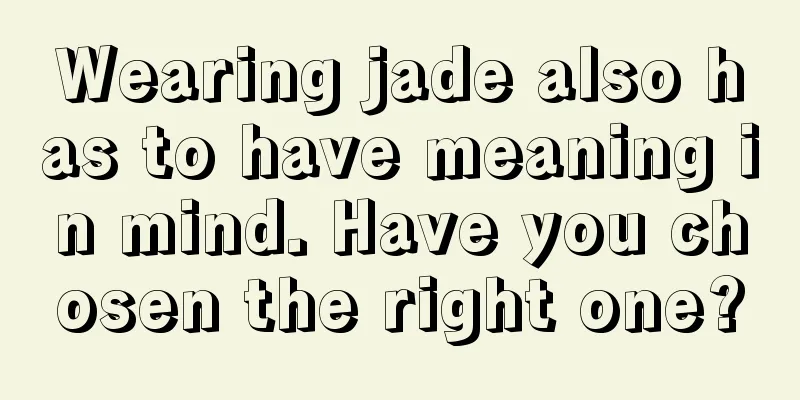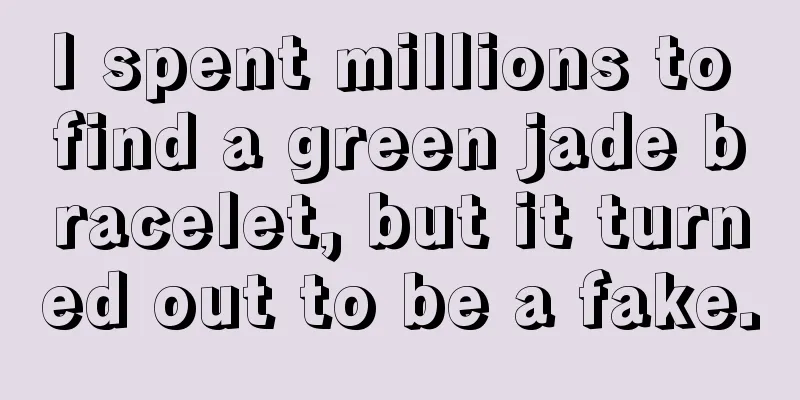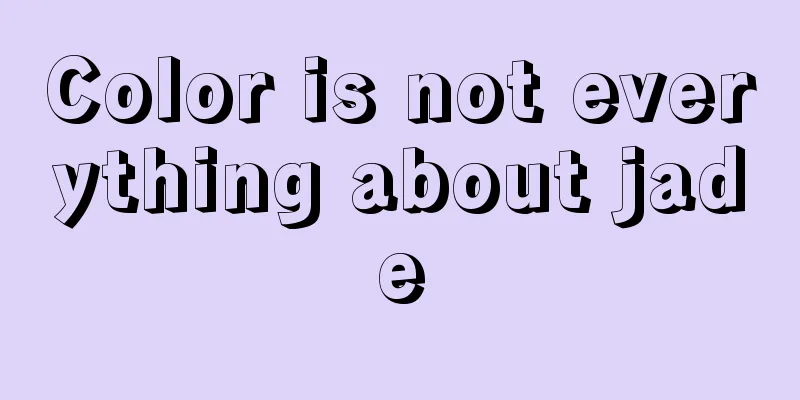The difference between "Qi Ying" and "Qi Ying" in jadeite is a thousand miles apart. Be careful not to be fooled again~

|
In the jade circle, we often hear the terms "qiying" or "qiying". Although there is only one word difference between the two, if you can't tell the difference, you may suffer a great loss. There is a long-standing method of jade identification, which is to illuminate the jade with a UV flashlight. If there is a fluorescent reaction, it means that the jade is fake. Jadeite of high-quality water quality will also have a fluorescent phenomenon. So how do we distinguish between these two kinds of light? Are you afraid of "fluorescence"? Distinguish between luminescence and fluorescence The principle of using a UV lamp to verify the authenticity of jadeite is that under a UV lamp, places stained with fluorescent agents will have a fluorescent reaction, and B and C grade jadeite will be stained with fluorescent agents during the counterfeiting process, so they can be distinguished at a glance. Because of this, many people are afraid of the word "fluorescence" and cannot even distinguish between the "fluorescence" and "glow" of jadeite, thinking that jadeite with the word "fluorescence" must be fake. This idea is definitely wrong. Jade egg-shaped Qiying "Qiying" is used to describe an optical phenomenon of jadeite. Jadeite itself does not emit light, so if you want to see the "qiying" of jadeite, there must be refraction of light. Fluorescence is when a piece of jade refracts light making the entire piece of jade uneven in brightness, creating a visual contrast to the human eye. The stronger the fluorescence, the more obvious the contrast. The crystal particles inside colorless jadeite of certain quality are fine to a certain extent and arranged closely and regularly. When shaking this kind of jade, one can observe a soft and hazy white light floating on the surface of the jade, like the moon under the movement of thin clouds. This phenomenon is called "qiying". There are two essential factors for jadeite to shine: one is the quality of the jadeite. Only jadeite with sufficient water content and sufficient transparency will have this phenomenon (mostly seen in colorless ice and glass jadeite); Twenty. In jade carving, the luster on flat-shaped jade is almost difficult to see, while the fluorescent effect of curved jade surface is stronger, so many craftsmen will process the edge of jade into a curved shape to highlight the luster. Fluorescence If the "luster" is an optical effect caused by the quality of the jade itself, then the "fluorescence" is caused by external factors. Under ultraviolet light, these artificially processed jades emit fluorescence, indicating that there are residual fluorescent agents in these jades. Jade with this fluorescent reaction is not natural jade. Although it may look no different now, its true color will be revealed over time. Moreover, long-term contact of human skin with fluorescent agents may cause cancer. This kind of jade is not suitable for wearing. fruit fcgc99 |
>>: The jade carver is so bold to carve a 5,000 yuan raw stone like this~
Recommend
Common questions for newbies in the industry when buying jadeite
About the Type, Water and Color of Jadeite Jade i...
Is it better to have good jade without carving, or good jade with good craftsmanship?
The saying "jade cannot be made into a usefu...
What do A-grade, B-grade, and C-grade jadeite mean?
The terms "A-grade jadeite" and "B...
How many of those unreliable rumors in the jade market do you believe?
Today's jade market is already overcrowded, p...
Only after reading this article can you truly understand floating flower jadeite!
Among the many manifestations of jade, there is a...
Still not sure what gender-neutral jewelry is? You are out!
The concept of "genderless" was first p...
Is Jade Exclusive for Ladies? These jades are also suitable for men!
It is well known that jewelry is a woman's na...
Let’s take a look at the methods commonly used to identify the authenticity of jadeite. Which one have you used?
How to identify the authenticity of jadeite is so...
A touch of green between fingers, a touch of love in the heart
Gently unfold the scroll of life, you don’t have ...
Why do people say “Men wear Guanyin and women wear Buddha”? What do you know about the meaning of jade figure carvings?
If you love jade, you must have heard this senten...
To identify the authenticity of jadeite, use these 3 tips
Jade is not only beautiful, but also has high col...
How to judge the price of jadeite rough stone? How much is a jadeite rough stone worth?
Is there any recent news about the jadeite rough ...
alert! After dyeing and heating, this kind of high-grade red and yellow jadeite is not natural!
As we all know, yellow and red jade are secondary...
The four major faces of the jade industry, you may not know any of them
The jade world not only has a wide variety of col...
Jade bracelets cannot be worn casually. There are certain rules for what bracelets should be worn by different people!
1. What color should you wear at what age? 1. You...









